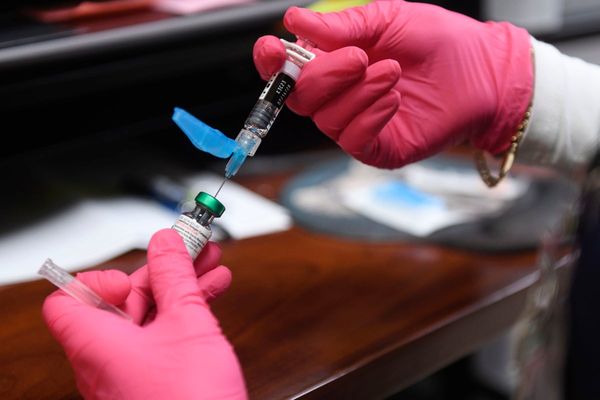
The ripples are deep gold in the sunset light as we paddle across Coniston Water towards Wild Cat Island. Officially known as Peel Island, this is where the children camp in Arthur Ransome’s Swallows and Amazons. The canoe glides between rocks into the hidden harbour with its pebbly beach, and we climb, excited as kids, up through bronze-leaved oaks and tall pines to explore the clifftop clearings.

This morning, I took several trains and a bus, each journey more lovely than the one before, to reach Coniston in the Lake District. Tomorrow I’ll catch a boat to visit Brantwood, once home to the Victorian writer and artist John Ruskin. A champion of art and nature and an early observer of the damage that human activities were doing to the environment, Ruskin might not have approved of all my transport choices. He loved boats, but saw railways as part of industrialisation’s “frenzy of avarice” and complained, with characteristic paternalism, about the “stupid herds of modern tourists” who “let themselves be emptied, like coals from a sack, at Windermere …” Ruskin, writing before cars swarmed across the landscape, recommends hiring “a chaise and pony for a day”.
Today’s sustainable ways to explore the area include a network of year-round boats and buses. Cumbria, often swamped in summer, is emptier in winter, one of many reasons why this is a great time of year to visit. With fewer crowds and spectacular colours, the lakes and dramatic cloudscapes are skin-pricklingly beautiful. Tonight, I’m embracing the longer nights with a dark-sky canoeing trip. It begins in the fading afternoon light and proceeds from Peel Island along the eastern shore of the lake, skirting the wooded bays to shelter from the evening breeze, as night falls over peaceful waters.

Path to Adventure also offers full days of canoeing with bushcraft and winter ghyll-scrambling for £52. The company’s directors, Al and Heather Wolfenden, show us how to light a Kelly kettle for hot drinks, and we toast marshmallows over the embers as stars and planets brighten overhead: zigzagging Cassiopeia, the great square of Pegasus, and shooting stars. As we paddle back across the lake, a tawny owl is hooting and Jupiter has risen, huge and luminous, from the dark, hilly horizon.
The meeting point for the canoeing, five miles south of Coniston, proved slightly tricky to reach without a car. But Ease E Ride delivers ebikes to people who are hiring them for a couple of days or more, at £55 a day. Mike Turner and Phil Latthem recently launched the company with bikes based at Arnside railway station and elsewhere. The bikes are fitted with lights and come with a fluorescent tabard. “The experience of cycling after dark in winter can be an adventure in its own right,” says Phil. “The landscapes feel different and there are different smells at night.”

Ebikes are useful on Coniston’s steep lanes. I’m staying in snug, slate-walled Sun Cottage at the top of the village, one of nearly 100 properties owned by Coppermines Lakes Cottages. Philip Johnston began to restore derelict mine buildings in a valley near Coniston in the early 1980s. A nearby conservation area, bought in 2018, is being naturally rewilded. Willows, birch and alder trees are sprouting among meadowsweet and bluebells, helping to reduce the danger of flooding.
The cottage comes with dramatic views across Herdwick-grazed fields to the lake and stargazing skylights in the attic bedroom. But it is, as one Australian guest wrote in the visitors’ book, “a bugger of a walk back from the pub”. With copper pots hanging from 16th-century beams and a cheerful firelit atmosphere, the Sun, 10 minutes away down precipitous quiet lanes, is my new local, serving pints of Elterwater Gold and exceptional home-cooked food.
Next morning, I head down to the jetty and catch the Coniston Launch to Ruskin’s house. On the way, there are mountain views across misty golden water and tales of Donald Campbell’s record-breaking hydroplane. Book online for 15% off (singles from £5.25). And for people arriving by boat, Brantwood costs £1 less (open Wednesday to Sunday in winter; £14/free for children and adults.
Stepping off the ferry at Brantwood and climbing past a lichen-wreathed orchard is a suitably inspiring culmination for this journey by train, bus and boat. There are huge views from the steep 100-hectare (250-acre) gardens, where streams run down through banks of ferns. Inside, the house is rich with original furniture and shelves of crystalline rocks, its walls papered with patterns based on Ruskin’s designs and crammed with drawings and watercolours. It’s a place with personality, revealing, like the minerals in his collection, different facets of this contradictory figure: radical and reactionary, inconsistent yet influential.

In Brantwood’s old coach house, I stop for lunch with a view at the creative Terrace cafe. Chef Joe Bragg has turned simple things such as toasties into generous, characterful dishes. There’s an imaginative meat-free menu featuring home-pickled veg and homemade chutney in big, lively platefuls.
Coniston’s many options for local walks and cycle rides include the short trek into Coppermines Valley, past waterfalls and a restored waterwheel; a bike trail to Cathedral Cavern; or a five-hour circular climb up the Old Man of Coniston. I’m opting for a lakeside stroll from traffic-free Torver, where the Coniston Launch stops at a floating jetty in the trees. I walk through gleaming beeches that are bending low over sunlit water near flocks of mallards, tufted ducks and chestnut-headed mergansers.

On my last morning, it’s pouring. Bus 505 from Coniston to Kendal winds through some of Cumbria’s finest scenery: craggy fells, mossy woods and misty-silver lakes, all extra-atmospheric in the rain. This picturesque hour-long tour, like all the buses I catch this week, costs just £2 as part of the extended bus fare-cap scheme until the end of 2024. I decide to take a scenic detour via Sizergh Castle, where visitors who arrive by bus get a free hot drink in the cafe. I change on to bus 555 in Kendal (the X6 also stops near Sizergh) and my latte is warming after a blustery walk from the main road through the castle’s autumnal grounds.
Eight centuries of eclectic planting and landscaping at Sizergh have created a rich tapestry of interwoven gardens and ornamental ponds, bright with fiery foliage that lifts the wintry afternoon. There are ochre vines and scarlet creepers, amber hornbeams and crimson acers, waving their radiant last leaves above carpets of stars. A productive kitchen garden, with thickets of rainbow chard, leads on from a striking rockery, fern-filled stumpery and medieval bank barn with an exhibition about gunpowder (gardens £5.50/£2.75 for adults/kids, nationaltrust.org.uk).

In 2022 National Trust visitors drove more than 3bn miles to reach properties around the UK. Dan Taylor, the trust’s general manager for south-east Cumbria and Morecambe Bay, is one of the people trying to reduce this figure through various proactive schemes. In between pointing out the solar panels on the visitor centre’s roof and the mice in the gift shop, carved from Sizergh’s coppiced wood, he tells me about plans to improve signage, traffic-free paths for people arriving on foot, and lots more.
Partnerships with organisations such as Good Journey, which promotes car-free leisure travel, and a range of incentives (Seaton Delaval in Northumberland has a wheel of fortune with possible prizes including free entry) have begun to shift travel patterns. Sizergh is also a hub for Ease E Ride bikes and the castle is right on the epic Walney to Wear coast-to-coast cycle route. “Millions of people charge into the Lake District up the main road,” says Dan, “and not many stop off to enjoy these quiet lanes and this relatively undiscovered area.”
Ruskin says something similar when he complains that train travellers are pitched into the Cumbrian landscape “head-foremost, and necessarily miss two-thirds of it”. He continues: “The Lake scenery really begins, on the south, at Lancaster, where the Cumberland hills are seen over Morecambe Bay …” I’m already planning another trip, through the nature reserves in Arnside and Silverdale, as the train speeds south past a glimpse of coast and over the River Lune.
Some transport was provided by Avanti West Coast (advance singles from Glasgow Central to Oxenholme from £11.40, and from Euston about £32. Accommodation by Coppermines Lakes Cottages (cottages from £340.40 for four nights). More information from visitlakedistrict.com







